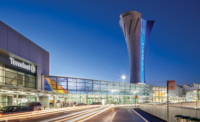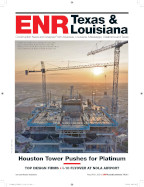W. Va. Airport Weighs Unmanned, Virtual Control Tower

Deterred by the $2-million cost of constructing an air traffic control tower and the $400,000 annual cost to operate and maintain it, managers of the Raleigh County Memorial Airport in Beckley, W.Va., are considering the installation of the first unmanned, virtual control tower as an alternative.
"This would answer all of our air-space concerns so we can monitor traffic," says airport manager Tom Cochran.
The two-runway airport has a 6,750-ft primary runway and a 5,000-ft crosswind runway, but it has never had a control tower—although operators want one. "It's just not in the budget," says Cochran.
It's not in the cards, either, according to a recent benefit/cost analysis performed by David Byers, a University of Nebraska, Omaha, professor who has worked with airports and air traffic control for 30 years. "I had to deliver the bad news," says Byers. "The level of traffic doesn't qualify them for funding under the [Federal Aviation Administration's] opportunity program."
But airport officials pressed for a solution until Byers suggested an unmanned, virtual control-tower system instead.
"The soul of the system is a radar strong enough to pick up aircraft," says Byers. "[The concept] is based on a manned version developed at an airport in the Australian outback."
The radar pinpoints incoming planes' x-y coordinates and time-stamps them to track movement. Altitude can be captured if the plane has an encoding transponder capable of transmitting that information. An automated system monitors traffic and warns pilots via radio if they are in the wrong areas or if paths are converging. If planes do not alter course, warnings escalate in urgency.
Assistance from a remote human controller may be needed during heavy air traffic, says Byers. Adding remote-manned capability would require high-definition and infrared cameras. Byers says the basic system would cost $500,000. Both he and airport officials at Beckley are pushing for FAA approval.
"I hope to have a fully operational system within 18 to 24 months," says Byers.




